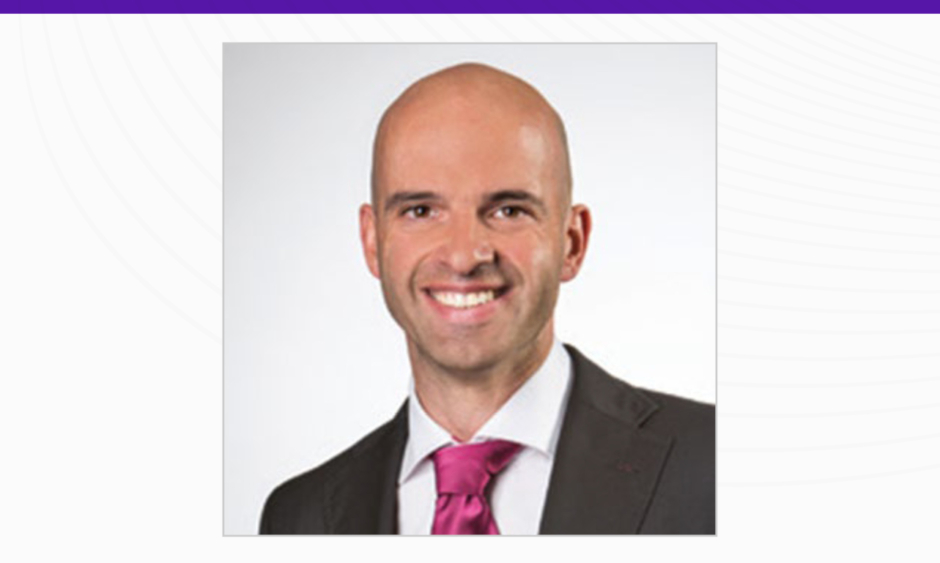Bart Torbeyns | Executive Director, European Diabetes Forum (EUDF)
What initially sparked your interest in pursuing a career in medical affairs, and how did this lead you to the field of diabetes?
In my previous role, I worked in the Pharma and was in the industry for about 20 years, but I felt that by working in medical affairs, I was also working closely with people. By with people, I mean people with diabetes first of all, and also with disease experts. So, in a role such as this, I would say that it involves working both for the company, with commercial interests, and for the real world, which is the world of patients and physicians. Being a bit in between, testing what disease experts and patients think about your solutions, and bringing that back internally to the company was really interesting for me.
I was also involved in a lot of internal training. In the beginning of that role, I was working more with people with diabetes and physicians. Over time, I have also started to work more and more with payers, sick funds, and politicians. That was a natural evolution in my career.
Where I am now, I’m working more in what we call public affairs or lobbying. Still, today, I would say that in the European Diabetes Forum (EUDF), it is really important to actually be the catalyst, or the linking person between politicians and academics and researchers. And that’s a lot of the work that I’m doing now; making sure that for instance, at the EASD conference, we successfully put three politicians and decision-makers in touch with researchers and clinicians. So, that’s the evolution from medical affairs to where I am now.
Having been founded in 2018, what led to the formation of EUDF?
There are basically two reasons. The first one is that there are a lot of diabetes associations in Europe; associations with patients, primary care providers, researchers, diabetologists, and companies. The idea was to bring all of these associations together into one forum, which is, today, the EUDF. This brings value because you can exchange a lot of information in a structured way. There is the low hanging fruit that you can align on very practical things, like making sure we do not end up hosting symposia on the same date. But, more importantly, the EUDF unifies voices regarding some strategic topics that are common to all stakeholders. Once we agree on these strategic topics, we then define clear, common objectives.
Secondly, there is a real belief that, despite a lot of innovative advances in the medical field, whether it’s medicines, solutions, or a way of treating people with diabetes, a lot of these advances do not translate to better outcomes for people with diabetes. So, if you look at mortality rates for people with diabetes today, it’s not going down, which is frustrating.
On a more positive side, we have the understanding that we need to talk to policymakers and governments of countries much more so they can make the necessary changes that must take place.
So, the first reason for the setting up of the EUDF was for the unification of voices. Secondly, to ensure that research solutions and innovation all translate into policy actions. Overall, the EUDF aims to provide better outcomes for people with diabetes.
The mission of the EUDF is to improve the care for diabetes at a national level. Can you talk about the steps the EUDF are taking to achieve this?
I see different layers to this. First of all, most of the time we are working with European or global institutions such as the World Health Organization (WHO), European Commission, European Parliament, and European Council. These European institutions have an impact at a national level, so when we are able to impact people working in these institutions, we can influence, inspire, and help different countries through, for example, sharing the best practices.
Another layer is, that we are an umbrella organisation, and many of our members have activities at country level. Of course, we inspire and motivate all members to be active at a country level.
The third layer is that we often involve national policymakers in our activities. From France, Belgium, Germany, or any other European country, we involve speakers.
The fourth layer is that we observe, with great interest, that some of the countries in Europe already have a national forum. This helps the implementation of topics at country level. The EUDF inspired countries like Belgium and Romania to set up their own country forum, which is quite effective as our role as the EUDF is limited in these countries. We are not responsible for organising these forums locally, but we try to demonstrate that working in a very inclusive matter and involving people with diabetes, primary care providers, specialty care providers, the diabetes industry, and research brings value to a country, in whatever format that they want to organise this. You can see that these countries are also very efficient, so I see different levels of impacting countries, from European inspiration to fostering more a national implementation in inclusive forums.
What changes have you brought into effect since being appointed Executive Director of the EUDF?
For the first few years, the EUDF was mainly run by volunteers, who were usually academic professors with very busy schedules, and supported by part-time consultancy. I was the first full-time professional employee in that respect. I was the first person brought in to organise things in a more professional or structured way, even very basic things like establishing an agenda and ensuring effective internal and external communication.
We also developed membership proposals, both for non-governmental organisations and companies. So, the membership has grown from the founding four members to where we are now, with a total of 10 members and supporting collaborators. We have all of the relevant diabetes associations in Europe around the table, so, in a way, we feel like the family really is complete.
Recently, we formed three strategic forums that allows each of our members to delegate one or two experts to work on a specific topic. This has been the first time that we have really focused on content. We brought together subject matter experts in professionally facilitated meetings to work together towards common objectives and recommendations. This has been a key positive change.
The fourth pillar is the external engagement side, because often we speak to people with diabetes or specialists who are already convinced that diabetes is important and crucial. So, we developed an outreach programme to engage beyond the diabetes community. We are specifically targeting decision makers, politicians, and the media to ensure diabetes moves to the top of their agenda.
Overall, a big part of my job is about mobilising volunteers because everybody that works alongside me is a volunteer. As I already mentioned, the 45 experts across the three forums have busy careers in diabetes, and so they spend quite some time with me, sometimes in the evening, to work on this common goal. I have a lot of respect for them, and it is an important part of my job to make sure that these people are willing to contribute and to spend their time on the EUDF mission.
In what ways did the COVID-19 pandemic impact the EUDF and their mission?
The first way is probably a bit more dramatic than the second one. Recently, I saw a WHO report that clearly stated that 95% of people dying from COVID-19 have a non-communicable disease such as diabetes or a cardiovascular disease. Diabetes has been in the news a lot, but not necessarily in a positive light. A lot of patients who are affected by these non-communicable diseases were heavily and disproportionately affected by COVID-19, which shows that we need to work on non-communicable diseases and, more specifically, on diabetes. In a way, this shows that if we think about future threats, the people that have been hit today might be hit in the next pandemic. I’m referring to people who are more vulnerable with diseases like diabetes.
If you look at the three topics that we are prioritising, they are even more relevant than ever. To give an example: integrated care and the role of primary care. Now that we are nearly two years into the pandemic, it is clear that continuity of care is crucial for any patient. For patients with diabetes, it is crucial that they have a good general practitioner and nurse to ensure that their condition is well controlled.
Regarding our work on digitalisation, we work a lot on medical applications at the moment as well as telemonitoring in healthcare. Everybody knows that digitalisation has become more important, from online shopping to contacting friends; however, for patients with diabetes in many countries, the only way of getting in touch with their general practitioner or nurse was, for quite some time, through digital services. Patients with a sufficient level of digital literacy were able to keep their condition under control more effectively. The digitalisation of services was a solution in this period, which will certainly remain an integral part in the future provision of care.
Lastly, when you look at data and registries, everyone knows the daily rates of COVID-19 cases and hospitalisations, which was unseen before. We also have a good example with COVID-19 that having data, and a clear and updated registry at country level, allows us to adapt the behaviour of people, the treatment of patients, and informs and directs decision making of politicians . For example, in Belgium, the protocol is to vaccinate certain populations who are a high priority, including patients with diabetes. Without registries, we wouldn’t know where to go. I think that the emergence of solid data, which we have seen in the pandemic, has allowed us to treat patients more effectively. Let’s ensure that we also create solid diabetes registries in those countries that don’t already have these data. And for those countries that have the data, let’s ensure they use these to act and improve the outcomes.
The recent EUDF Symposium presented at the 2021 EASD Congress on the topic of data usage to raise awareness in diabetes care. Could you tell us a bit about what areas are currently lacking in diabetes care?
We talked about raising awareness first, followed by initiating action. Some countries do not have good diabetes registries and so do not have good data. You cannot raise awareness in a country if you don’t have the appropriate figures about the disease. You need to know your enemy. So, raising awareness, I would say, is a call to action for countries that do not have access to these registries; however, it’s also about making sure that once you have the data, you really use it and let it speak for itself. Currently, 11% of the population has diabetes, but not everybody is convinced of the problem that diabetes is and will be in the future. Unfortunately, this is only going to increase over time. Having data available and making sure that policymakers have a clear idea about the size of the problem in their country is crucial for raising awareness.
In the session, we gave recommendations on how to set up good registries and ensure that the data is used effectively. This might seem obvious but we know that in many, many countries this is not happening, and the European Commission is also working on this issue. This session projected ideas of what we want to achieve, which is improvement in diabetes care. If you have data and you’re able to detect, for instance, uncontrolled patients and high-risk patients, it seems obvious. However, we can do a better job in making sure that we use this level of granularity to also work to improve outcomes for these patients with diabetes. So, there was a call to action to evolve from a description of the situation to a real intervention.
Using data to improve clinical care is often referred to as primary use of the data. The secondary use of data by policy makers would be to make decisions on what is needed in a specific country based on solid facts and figures.
Overall, I would say that raising awareness and ensuring that the data we have available is put to good use are the two main areas currently lacking in diabetes care.
One of the EUDF’s objectives is to “continuously improve and innovate diabetes care.” How can we expect to see the field of diabetes progress in regard to innovative technology and digital care?
I believe that there is already a lot on the market in regard to digital care; however, in one way or another, healthcare still has a lot of room for further uptake of digital solutions compared to other areas where digitalisation is more advanced. I think that, in the coming years, it is important to ensure that there is an uptake of digital health solutions.
A lot of the solutions are probably still standalone and tackle a specific issue, so more integration may be seen as well. So not a standalone app but an app that can integrate into the electronic health record of physicians, which will be better connected to medicines, treatments, and management schemes.
I also expect that further integration of digital tools will allow people with diabetes to have more of an influence and open up more possibilities. Patients will have more influence over the way the care is delivered to them, for example, in regard to their appointments, as to their preference of digital or face-to-face appointments. Digitalisation will also be an enabler towards more personalised healthcare. Let’s hope that these innovations will also benefit in the near future from more accessible reimbursement schemes, thereby improving the quality of patient care and increasing accessibility to a range of available treatment options.
Could you give us an overview of the EUDF strategic forums and how they impact both diabetes patients and diabetologists?
We have three forums, the first being data and registries. As I alluded to previously, with better use of data, patients can expect better treatment outcomes and improved self-management. Having good data is not only useful for physicians to make decisions, but also is valuable to inform patients with diabetes how to optimally manage their condition, which will increase quality of care.
Our second forum is focused on integrated care. Currently, there is still quite a lot of fragmentation between primary and secondary care, as well as with social care, so we work a lot on the concept of care continuity. This allows patients with diabetes to know exactly what they can expect from the whole team and process, being clear about shared goals and have access to all information. Hopefully, this will improve decision making and the overall management, so that physicians can really use their medical expertise at the right moment. Too often we hear of patients being referred too late or not at all, so I hope that this will also lead to a more proactive and co-ordinated approach, with advantages to both patients and physicians.
The third forum is about digitalisation and self-care. After certification and regulatory approval, we also focus on reimbursement as an incentive, which will allow patients to access certain treatments that may not usually be available to them. Both patients and healthcare professionals have expressed a need for better education on digital solutions, and this improvement in education will also increase the quality of care and lead to better outcomes for patients.
What are the key priorities for the EUDF in the coming years?
First of all, we are working with the three strategic forums to ensure that adequate policy recommendations are made for the diabetes community. One of our main priorities is to go further with what we are already doing, namely by evolving from description and recommendation to action and implementation. So first, ensuring that our members are on board with the recommendations that we are making, and that they are also thinking about what they can do to extend the impact of our goal. Second, I also wanted to mention the importance of going beyond the diabetes community to decision makers and politicians. Next year, we will further increase our efforts towards policy and decision makers, which will contribute to the implementation of our recommendations reaching a wider population. So, it’s all about implementing and ensuring that we have the right partnerships. Let’s work together and join forces!







